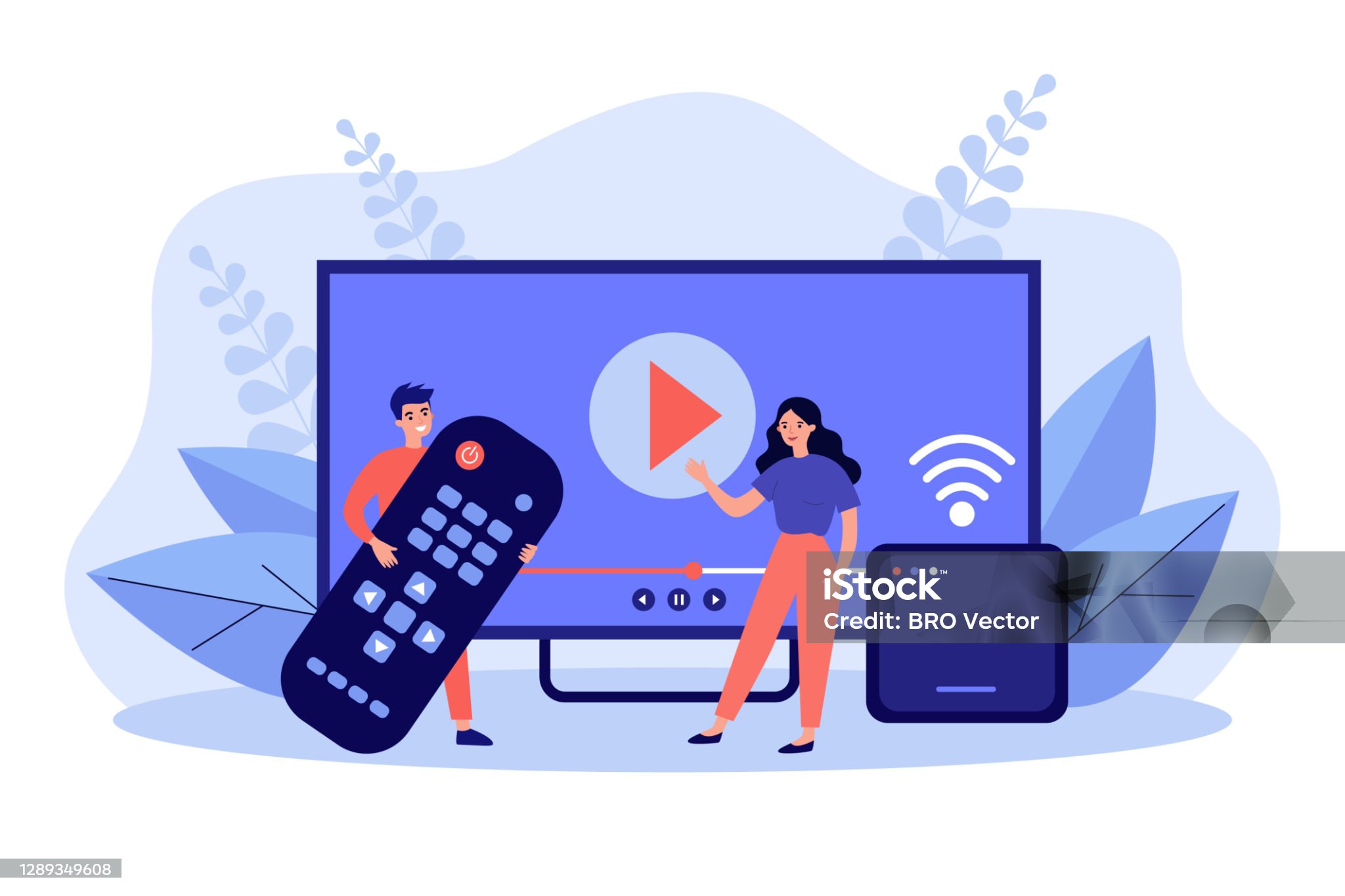How 5G is Revolutionizing IPTV in the USA and UK
How 5G is Revolutionizing IPTV in the USA and UK
Blog Article
1.Overview of IPTV

IPTV, or Internet Protocol Television, is gaining increasing influence within the media industry. In stark contrast to traditional TV broadcasting methods that use expensive and largely exclusive broadcasting technologies, IPTV is delivered over broadband networks by using the same Internet Protocol (IP) that serves millions of home computers on the modern Internet. The concept that the same shift towards on-demand services is anticipated for the era of multiscreen TV consumption has already captured the interest of various interested parties in the technology convergence and future potential.
Consumers have now started to watch TV programs and other video entertainment in a variety of locations and on multiple platforms such as mobile phones, computers, laptops, PDAs, and additional tools, alongside conventional televisions. IPTV is still in its infancy as a service. It is expanding rapidly, and numerous strategies are developing that may help support growth.
Some believe that low-budget production will potentially be the first content production category to transition to smaller devices and explore long-tail strategies. Operating on the commercial end of the TV broadcasting pipeline, the current state of IPTV hosting and services, nevertheless, has several clear advantages over its traditional counterparts. They include HDTV, flexible viewing, DVR functionality, audio integration, web content, and responsive customer care via alternative communication channels such as cell phones, PDAs, global communication devices, etc.
For IPTV hosting to operate effectively, however, the networking edge devices, the core switch, and the IPTV server consisting of video encoders and blade server setups have to interoperate properly. Multiple regional and national hosting facilities must be fully redundant or else the stream quality falters, shows seem to get lost and are not saved, interactive features cease, the picture on the TV screen is lost, the sound becomes discontinuous, and the shows and services will malfunction.
This text will discuss the competitive environment for IPTV services in the U.K. and the U.S.. Through such a comparative analysis, a series of key regulatory themes across multiple focus areas can be explored.
2.Media Regulation in the UK and the US

According to jurisprudence and corresponding theoretical debates, the regulatory strategy adopted and the details of the policy depend on perspectives on the marketplace. The regulation of media involves competition policy, media proprietary structures, consumer protection, and the safeguarding of at-risk populations.
Therefore, if market regulation is the objective, we must comprehend what defines the media market landscape. Whether it is about ownership limits, studies on competition, consumer rights, or media content for children, the regulator has to possess insight into these areas; which media markets are growing at a fast pace, where we have competition, integrated vertical operations, and ownership overlaps, and which sectors are slow to compete and suitable for fresh tactics of market players.
In other copyright, the landscape of these media markets has always changed from the static to the dynamic, and only if we reflect on the policymakers can we predict future developments.
The growth of IPTV everywhere makes its spread more common. By combining traditional television offerings with cutting-edge services such as technology-driven interactive options, IPTV has the potential to be a crucial factor in enhancing rural appeal. If so, will this be sufficient for the regulator to adapt its strategy?
We have no data that IPTV has extra attractiveness to the people who do not subscribe to cable or DTH. However, a number of recent changes have hindered IPTV expansion – and it is these developments that have led to dampened forecasts about IPTV's future.
Meanwhile, the UK embraced a liberal regulation and a proactive consultation with industry stakeholders.
3.Market Leaders and Distribution

In the UK, BT is the key player in the UK IPTV market with a 1.18% market share, and YouView has a market share of 2.8%, which is the landscape of single and two-service bundles. BT is typically the leader in the UK based on statistics, although it fluctuates slightly over time across the range of 7 to 9%.
In the United Kingdom, Virgin Media was the initial provider of IPTV using hybrid fiber-coaxial technology, followed shortly by BT. Netflix and Amazon Prime are the dominant streaming providers in the UK IPTV market. Amazon has its own set-top device-centered platform called Amazon Fire TV, comparable to Roku, and has just entered the UK. However, Netflix and Amazon are excluded from telco networks.
In the United States, AT&T is the top provider with a 17.31% stake, outperforming Verizon’s FiOS at 16.88 percent. However, considering only IPTV services over DSL, the leader is CenturyLink, trailing AT&T and Frontier, and Lumen.
Cable TV has the overwhelming share of the American market, with AT&T drawing 16.5 million IPTV customers, primarily through its U-verse service and DirecTV service, which also operates in South America. The US market is, therefore, segmented between the leading telecom providers offering IPTV services and emerging internet-based firms.
In Western markets, leading companies use a converged service offering or a strategy focusing on loyal users for the majority of their marketing, including multi-play options. In the United States, AT&T, Verizon, and Lumen depend on their proprietary infrastructure or legacy telecom systems to provide IPTV options, albeit on a smaller scale.
4.Subscription Types and Media Content

There are distinct aspects in the content offerings in the IPTV sectors of the UK and US. The potential selection of content includes live national or regional programming, on-demand programs and episodes, recorded programming, and unique content like TV shows or movies only available through that service that could not be bought on video or broadcasted beyond the service.
The UK services provide conventional channel tiers comparable with the UK cable platforms. They also offer mid-size packages that cover essential pay-TV options. Content is grouped not just by genre, but by medium: terrestrial, satellite, Freeview, and BT Vision VOD.
The key differences for the IPTV market are the plan types in the form of fixed packages versus the more customizable channel-by-channel option. UK IPTV subscribers can opt for extra content plans as their viewing tastes change, while these channels come pre-bundled in the US, in line with a user’s initial long-term plan.
Content alliances highlight the distinct policy environments for media markets in the US and UK. The era of condensed content timelines and the shifts in the sector has major consequences, the most direct being the market role of the UK’s leading IPTV provider.
Although a late entrant to the saturated and challenging UK TV sector, Setanta is poised to capture a broad audience through presenting a modern appeal and having the turn of the globe’s highest-profile rights. The strength of the brands goes a long way, paired with a product that has a cost-effective pricing and caters to passionate UK soccer enthusiasts with an enticing extra service.
5.Emerging Technologies and Upcoming Innovations

5G networks, combined with millions of IoT devices, have disrupted IPTV development with the implementation of AI and machine learning. Cloud computing is significantly complementing AI systems to enable advanced features. Proprietary AI recommendation systems are increasingly being implemented by media platforms to enhance user engagement with their own distinctive features. The video industry has been revolutionized with a new technological edge.
A enhanced bitrate, via better resolution or improved frame rates, has been a main objective in enhancing viewer engagement and attracting subscribers. The advancements in recent years stemmed from new standards developed by industry stakeholders.
Several proprietary software stacks with a reduced complexity are nearing release. Rather than releasing feature requests, such software stacks would allow video delivery services to concentrate on performance tweaks to further enhance user experience. This paradigm, similar to tv uk series earlier approaches, hinged on customer perception and their desire to see value for their money.
In the near future, as technological enthusiasm creates a level playing field in audience engagement and industry growth stabilizes, we predict a service-lean technology market scenario to keep older audiences interested.
We emphasize two primary considerations below for the two major IPTV markets.
1. All the major stakeholders may participate in the evolution in viewer interaction by turning passive content into interactive, immersive content.
2. We see VR and AR as the primary forces behind the emerging patterns for these fields.
The constantly changing audience mindset puts data at the forefront for every stakeholder. Legal boundaries would limit straightforward access to user information; hence, data privacy and protection laws would hesitate to embrace new technologies that may compromise user safety. However, the present streaming landscape suggests otherwise.
The cybersecurity index is currently extremely low. Technological advances have made cyber breaches more virtual than a job done hand-to-hand, thereby benefiting digital fraudsters at a greater extent than black-collar culprits.
With the advent of centralized broadcasting systems, demand for IPTV has been on the rise. Depending on customer preferences, these developments in technology are set to revolutionize IPTV.
References:Bae, H. W. and Kim, D. H. "A Study of Factors affecting subscription to IPTV Service." JBE (2023). kibme.org
Baea, H. W. and Kima, D. H. "A Study about Moderating Effect of Age on The IPTV Service Subscription Intention." JBE (2024). kibme.org
Cho, T., Cho, T., and Zhang, H. "The Relationship between the Service Quality of IPTV Home Training and Consumers' Exercise Satisfaction and Continuous Use during the COVID-19 Pandemic." Businesses (2023). mdpi.com
Report this page